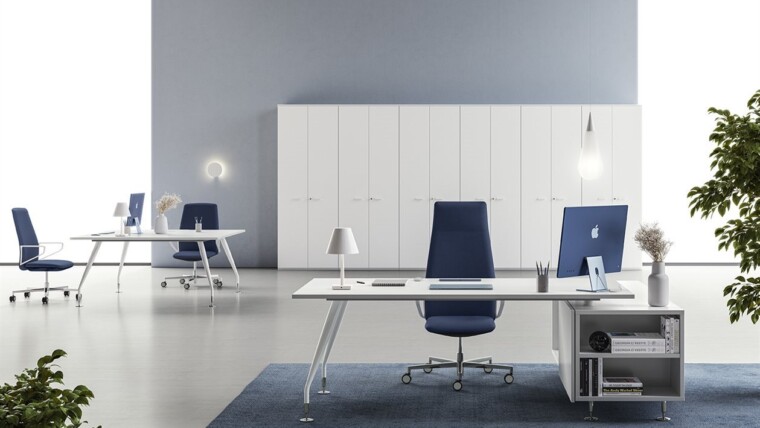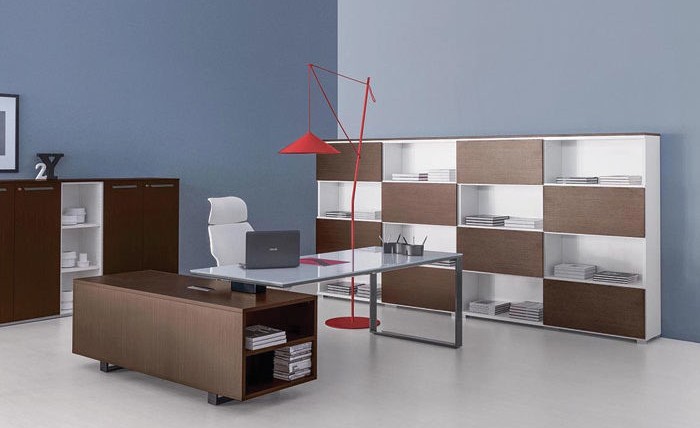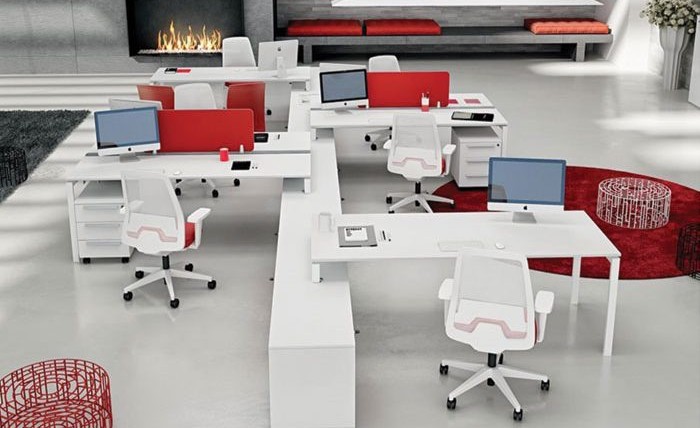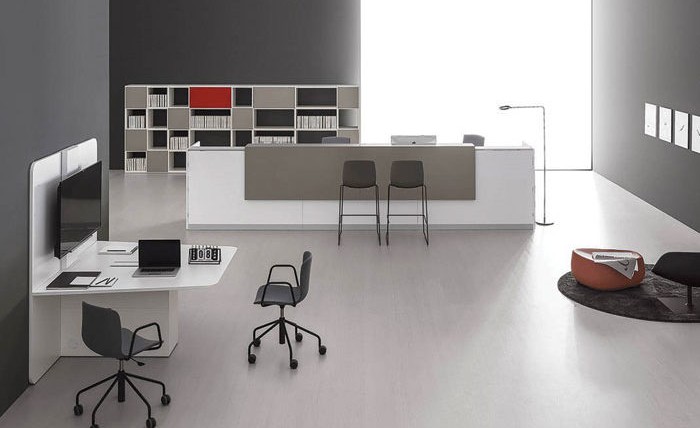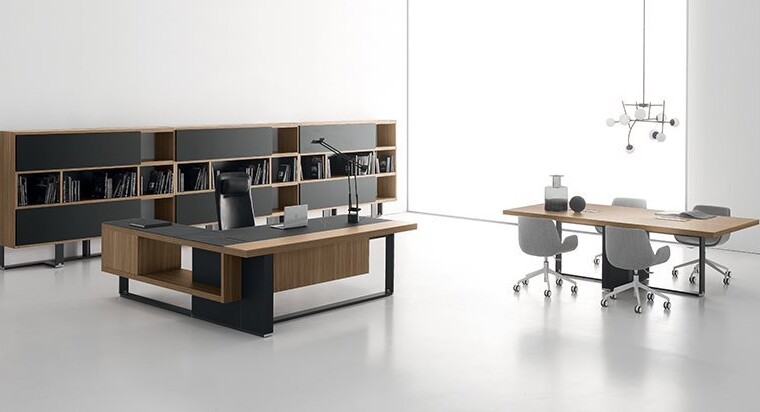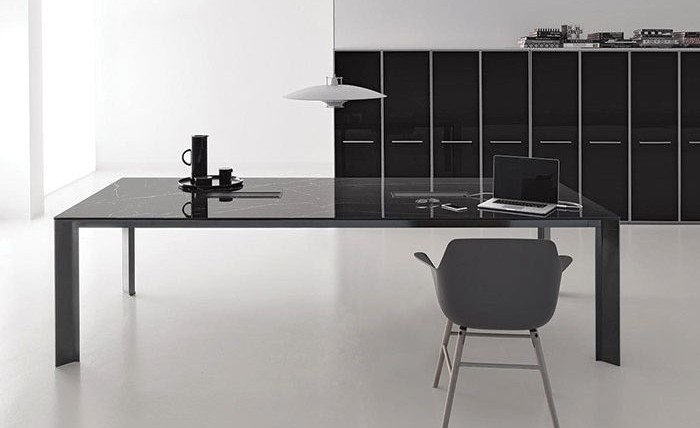Let’s face it: The work-life balance is a myth for most Americans. That’s where office design comes in. Smartly designed offices help with health and well-being of employees, employee retention, lower absenteeism, boosted productivity, job satisfaction, and improved creativity. Beautiful breakout spaces are designed with this in mind, and they aren’t entirely there for functionality. State-of-the-art kitchens help workers feel at home and well fed, cafés resembling restaurants more than offices feel like entertainment rather than a working lunch, and homey alcoves where workers are encouraged to get comfortable and be sociable with their colleagues promote workplace friendships, which are shown to improve employee retention and satisfaction.
Much of the reason offices cater to the comfort of employees lies in a mountain of data showing tired, mentally drained, and unhappy staff are not at their creative, productive best; are more likely to switch jobs; and generally have a negative impact on company culture.
When mentally recharged and relaxed employees bring their A game, everybody benefits. So how do you keep your employees at the peak of their creativity and satisfaction?
Introducing…Recharge Rooms
These are more than a simple café or chair grouping in a convenient place for conversation between colleagues or that morning java that gets the juices flowing. They’re rooms where employees can take a few minutes of downtime to zone out, relax, stretch, nap, or even meditate.
The idea is to unwind, get away from the stresses of the job long enough that the brain resets, and when the batteries are fully recharged, the employee emerges ready to tackle even the toughest projects with renewed energy.
Design and Function
Recharge rooms can take on nearly any relaxing form. While some companies consider space dedicated to naptime or even an on-site masseuse a luxury, more and more are becoming aware of the mental and physical benefits of providing employees room to relax. They don’t even need to take up a lot of space, depending on the purpose of the room.
Meditation/Yoga rooms can be just big enough for a floor mat and a small table on which to provide music. Meditation practitioners can attest that just five minutes of quiet mindfulness can do wonders for concentration, improved sleep, breathing, and focus throughout the day. Stretching and yoga are also reflective and can quiet the mind, as well as improve blood flow and energy.
Game rooms may sound like sound like a waste of time, but the reason game apps are so popular on smartphones and portable devices is because they allow the player to tune out the world when it gets too chaotic. Whether that’s with a room designed in a pixelated theme with beloved video game characters like Mario and Luigi, or a simple space with a beanbag chair and a gaming console hooked to a small TV, the video game lovers on the payroll know that not only do they have a place to get away for a bit, but that they’re valued team members whose choice of relaxation isn’t frowned upon.
Spas or massage rooms are another big hit, with some companies employing massage therapists ready to work out the tension when employees need it the most. This can be especially helpful for people with medical situations, such as migraine sufferers or those with back and muscle problems. Even a 10-minute chair massage can release pent-up tension and relieve the pressure on joints and nerves that cause a large number of employees discomfort. Sometimes ergonomics and sit-stand desks aren’t enough and a good massage is the best medicine to get back in the fray with more energy and drive.
Nap rooms are an idea that many would have frowned upon even a few years ago, but employers are quickly coming to realize a sleep-deprived staff member isn’t at their best. Google provides high-tech sleep pods for employees logging long hours. The previous solution–swigging coffee–can lead to jittery extremities and disjointed thoughts, when what they really need is a power nap. A small, interior room big enough for a hammock or a comfortable couch can do wonders for someone under deadline, who’s put in some long hours, and has to have a power nap to hit the ground running. Maintaining a reservation program on the room could also ensure someone doesn’t oversleep and miss out on their day.
Electronics-free rooms are another form of Zen room, where employees leave their device at the door or turned completely off. The ability to take a few disconnected minutes, or even to give ourselves permission to disconnect, can relieve stress in ways no number of relaxation apps can mimic. The act of disconnecting purposefully can help with the fear of missing out, where checking just one more link, or one more tweet, or one more post leads to information overload in our effort to know what’s going on in the world.
Get Creative With Your Recharge Room Design
These are just a few ideas for relaxation rooms companies can adopt, but there are so many options out there: billiard rooms, Japanese gardens, mountain climbing walls, acoustic music rooms with a variety of instruments, and more. If it’s something your employees enjoy in their off-time, perhaps there’s a company-friendly version you can consider for your office space. The possibilities–and your employees’ well-being and gratitude–can be endless.
Source: Inc.com


